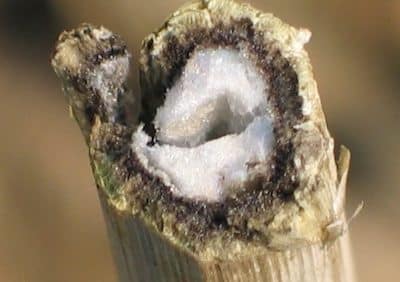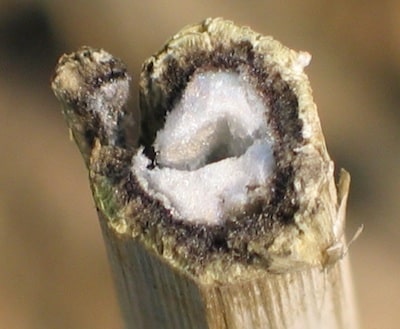
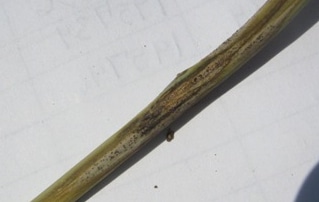
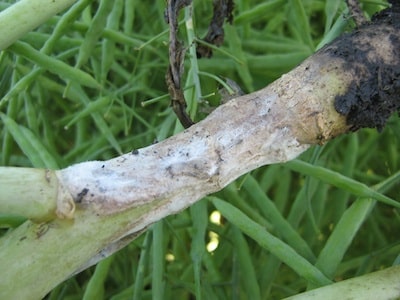
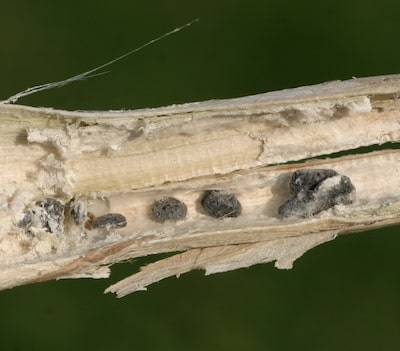
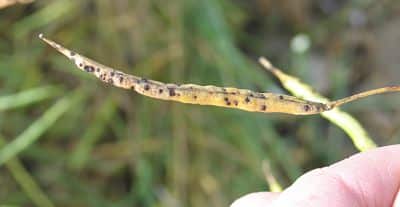
Pre-harvest is a good time to scout for disease severity. Fields with lots of diseased plants may also be poorer candidates for straight cutting due to the increased shattering risk.
Sclerotinia
—Look for areas in the field with lodged or prematurely ripened plants.
—Examine the basal (bottom) to middle of the stem. If sclerotinia is present, you will notice a white, downy growth on the stem if the stem is still green. Otherwise the stem will be bleached or brown (like a bone) and shredded typically around the entire stem.
—If you break open the shredded stem, you may find hard, black bodies (typically similar in appearance of mouse droppings but larger), inside the stem or on the ground near the stem.
Blackleg
—Look for areas in the field with lodged or prematurely ripened plants.
—Examine the basal (bottom) to middle of the stem. With blackleg you will see a round to oval lesion or canker on the stem near the soil line and sometimes higher in the stem. These stem lesions are beige to gray and may have a dark border.
—Black pepper specks (picnidia) may appear within the lesions.
—This infection will eventually grow through the stem, cutting off nutrient flow. If you see plants drying up, cut a few open to check. Slice through the stem at the base or through the canker to determine if discoloration is present within the stem, and what proportion of the cross section of the stem is affected. If more than half the area of the stem is darkened by the fungus then the yield of that plant is more likely to have been reduced by the disease. Also, pull them up to check for clubroot as another possibility that could produce similar above ground symptoms.
Alternaria
—Alternaria black spot will move up the plant, eventually reaching the pods. When infected areas make up 50% or more of the crop, swathing early may be the best way to salvage the yield in those infected plants if a large proportion of pod surfaces are covered with the black spots. Otherwise diseased plants will shell out if left standing while you wait for healthy plants to be ready. If healthy plants are showing some color change or if the seeds are at least firm, they should mature in the swath.

